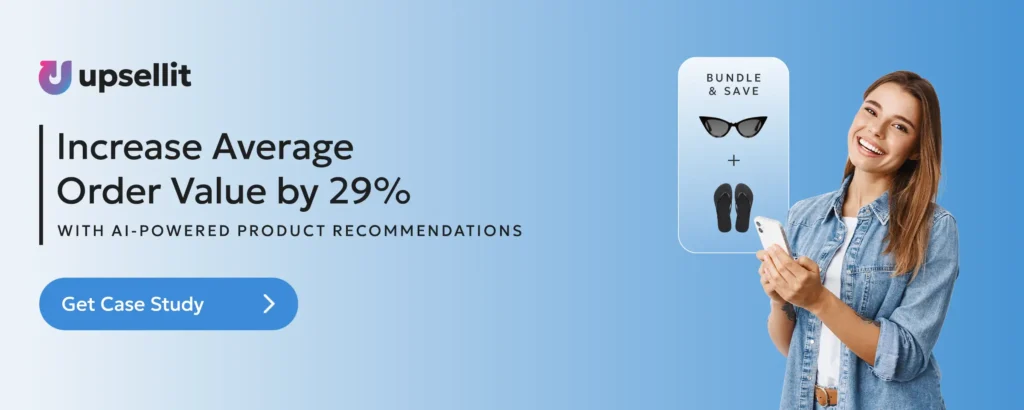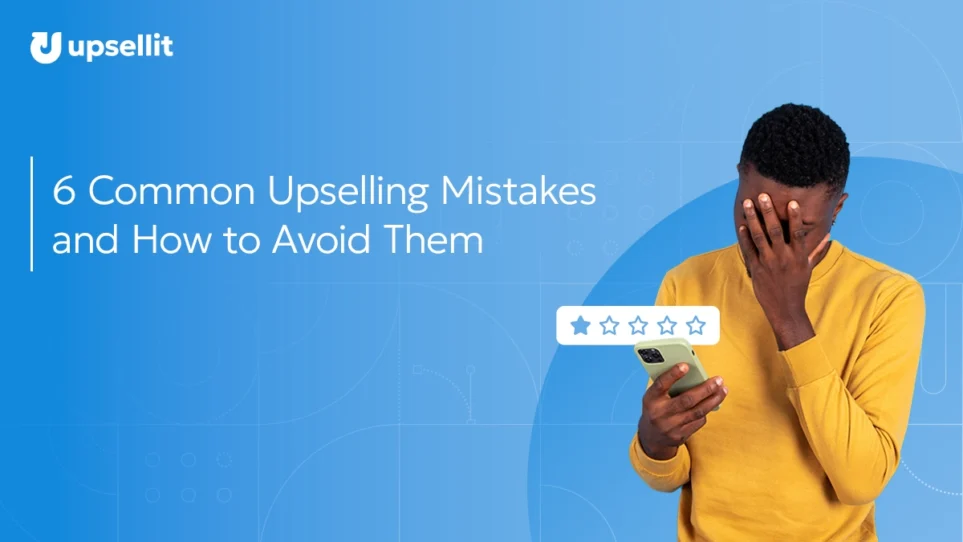Upselling isn’t just about increasing the value of a transaction—it’s about enhancing the customer experience and building stronger relationships. Done right, it can boost your revenue while keeping customers coming back for more.
Studies show that selling to existing customers is 50% to 80% more effective than acquiring new ones. Upselling to these customers isn’t just profitable—it’s a chance to provide additional value by recommending the right products at the right time. But upselling isn’t always as straightforward as it seems.
Here are six common mistakes businesses make when upselling—and how to avoid them.
The Most Common Mistakes Businesses Make When Upselling and How to Avoid Them
Mistake #1: Not Understanding Your Customer
Why It’s a Problem: Treating your customers as data points instead of individuals is a big mistake. To successfully upsell, you need to understand their needs and preferences.
How to Avoid It:
- Personalize your upsells by filtering them to the most relevant customers. If someone is buying a coffee machine designed for mess-free use, suggest a version with additional features or easier cleanup.
- Keep track of your customers’ evolving needs and offer upsells that meet these changes over time. This will improve satisfaction and increase loyalty.
Quick Tip: Focus on offering products that genuinely improve the customer’s experience, not just what might seem like an obvious sale.

Mistake #2: Being Too Aggressive
Why It’s a Problem: Upselling can backfire if it feels too pushy or forced. Customers want to feel trusted and respected, not pressured.
How to Avoid It:
- Keep your upsell suggestions clear, relevant, and limited to 2-3 options. Offering too many choices can overwhelm customers and decrease conversion rates.
- Use the Problem-Agitate-Solution approach: Identify the customer’s pain point, amplify it to create urgency, and then offer the perfect solution.
Quick Tip: Focus on building a relationship with your customers. Don’t just try to make the sale; aim to add value to their purchase.

Mistake #3: Focusing on the Wrong Product or Service
Why It’s a Problem: Offering upsells that don’t align with what the customer actually needs or values can lead to frustration and abandoned purchases.
How to Avoid It:
- Personalize your recommendations based on the customer’s interests. Instead of recommending a product at random, offer an upgrade or complementary item that genuinely adds value to their current selection.
- Keep upsells within a reasonable price range—no more than 25% of the original order. Too many high-priced upsells can deter customers from completing their purchase.
Quick Tip: Frame your upsell in a way that highlights how it will solve the customer’s problem or improve their experience.

Mistake #4: Failing to A/B Test Different Upsells
Why It’s a Problem: Relying on guesswork can lead to wasted resources and missed opportunities. Not all customers will respond the same way to an upsell, so you need to test what works.
How to Avoid It:
- Experiment with different offers, product variations, and pricing to see what resonates with your customers. Test multiple types of upsells to understand which drive the best results.
- Continuously analyze the data to optimize your upselling strategy.
Quick Tip: Use A/B testing as a way to refine your approach—what works today might need tweaking tomorrow.

Mistake #5: Not Using the Right Timing
Why It’s a Problem: Timing is everything in upselling. If you present an offer too early, it may feel pushy; too late, and you risk missing the opportunity altogether.
How to Avoid It:
- The best time to upsell is just after the customer has made a decision to buy but before they reach the checkout page.
- Use Exit Detect Technology to time your upsells perfectly, engaging customers just as they’re about to leave the site.
Quick Tip: Place upsell options on product pages to make them easy for customers to find without distracting from the main purchase. There’s much more to optimizing your product page, as this is just 1 out of 4 strategies.
Mistake #6: Not Providing Enough Value
Why It’s a Problem: Customers won’t bite if they don’t see the value in what you’re offering. If your upsell doesn’t make their purchase better or easier, they’ll skip it.
How to Avoid It:
- Always communicate the value of the upsell. Highlight how the upgraded product or service benefits them. For example, emphasize how a larger quantity offers more savings or how a higher-end product will enhance their experience.
- Offer solutions to potential concerns, such as providing flexible payment plans or extra support for more complex products.
Quick Tip: Focus on how the upsell improves the customer’s experience, not just the price or the product.
Benefits of Leveraging AI Recommendations
Leveraging AI Recommendations is a game-changer in upselling strategies. By leaning on AI algorithms, businesses can get valuable insights into shoppers’ preferences and provide a personalized customer experience. And personalized experiences build customer loyalty. In fact, over 60% of online shoppers in a survey stated that brands not delivering personalized content could lose their loyalty.
AI Recommendations do more than just create personalized customer experiences and build customer loyalty. Here are four additional ways they can benefit your brand:
1. Increase Revenue
AI-powered recommendations suggest the right product to the right customer at the right time, increasing successful upsells.
2. Improve the Customer Experience
Personalized recommendations based on browsing and purchase history create a more engaging shopping journey.
3. Reduce Time and Costs
AI algorithms analyze large amounts of data in real-time and make instant product recommendations, saving time and reducing the risk of lost sales.
4. Provide Valuable Insights
The use of AI in upselling provides valuable insights into customer behavior and preferences, helping businesses to understand their customers better and refine their marketing strategies.
Take a Customer-Centric Approach to Upselling
When done right, upselling can drive revenue, enhance customer experiences, and build lasting relationships. Avoid these common mistakes and focus on providing value to your customers. Use subtle strategies, personalize your recommendations, and always aim to improve the customer’s experience.
Ready to build a customer-centric upselling strategy? Download Upsellit’s AI Recommendations case study today to maximize revenue and boost customer engagement.

